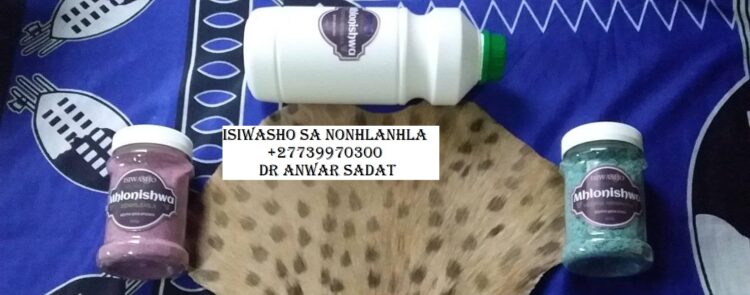Isiwasho Sa Nonhlanhla: Our Traditional Cleansing Ritual
You’ve probably heard about Isiwasho Sa Nonhlanhla spiritual cleansing rituals before, but have you ever experienced one for yourself? Well, stick around as we dive into the deep cultural roots and meaning behind isiwasho sa nonhlanhla – a powerful Zulu ritual for cleansing away negative energy and bringing in good fortune. We’ll explore the ancient origins of this practice, its symbolic elements, and what it’s like to take part in one. Whether you come from this tradition or know nothing about it, you’ll learn something new about the central role ritual plays in connecting communities back to their heritage. So get ready to break out the herbs and open your mind as we cleanse away the old and call in new blessings!
Understanding Isiwasho: A Sacred Zulu Ritual
Isiwasho sa Nonhlanhla is an important Zulu cleansing ritual. Performed before important life events like weddings or funerals, isiwasho aims to wash away spiritual impurities and bring good fortune.
The ritual begins at sunrise. Family and friends gather near a river or stream and an elder leads call-and-response chants and prayers. Participants ask their ancestors for guidance and protection. They give thanks for life’s blessings and request that bad luck and misfortune be carried away.
Preparing the Medicine
A traditional healer prepares special herbs and medicines for the ceremony. The ingredients often include imphepho (a fragrant herb), intsangu (a root), and water from the river. The medicines are mixed in a sacred pot while more prayers and chants are recited.
The Cleansing
Each person undergoes a physical and spiritual cleansing. They remove their clothes and jewelry and then enter the water. The healer pours the medicine over their head and body while speaking words of blessing. As the water washes away the physical dirt and grime, the sacred medicine cleanses away spiritual impurities.
Participants emerge from the water renewed and blessed. They dress in new white clothes and share a celebratory meal with friends and family. There is dancing, singing, and an overall joyous atmosphere. Through isiwasho sa Nonhlanhla, the community comes together to spiritually cleanse and uplift one another. This sacred Zulu ritual connects people to their ancestral traditions and reinforces the bonds between the physical and spiritual worlds.
The Significance of Isiwasho Sa Nonhlanhla
The Isiwasho Sa Nonhlanhla cleansing ritual holds deep cultural and spiritual significance. For generations, this sacred ritual has been performed to purge impurities and negativity, allowing us to start anew with a clean slate.
Purification of Mind, Body, and Spirit
The herbs, plants, and natural elements used in the Isiwasho Sa Nonhlanhla are believed to have healing and restorative properties. The ritual aims to purify your mind, body, and spirit, ridding you of harmful energies and toxins. The smoke from the burning plants is thought to cleanse your aura and chakras, while the symbolic act of washing helps you let go of past hurts and emotional baggage.
Connecting with Ancestral Traditions
Performing the Isiwasho Sa Nonhlanhla ritual connects you with the ancestral traditions of our people. The ritual has been passed down through many generations and is a way to honor your heritage. The chanting of ancient prayers and songs during the ceremony links you to the wisdom and knowledge of your forebears.
Bringing People Together
Another significant aspect of Isiwasho Sa Nonhlanhla is bringing people together. Family and community members come together to support one another through the ritual. There is a strong sense of shared culture and identity. The ceremony fosters social cohesion and togetherness.
Starting Anew
Ultimately, Isiwasho Sa Nonhlanhla signifies a new beginning. By washing away the past, you can start afresh with a renewed sense of optimism and hope. You can face the future unburdened, having been cleansed in both body and spirit. The ritual allows you to turn over a new leaf and transform yourself for the better.
The Isiwasho Sa Nonhlanhla cleansing ritual holds deep meaning in our culture. Performing this sacred ceremony allows for purification, connection with tradition, community togetherness, and a chance for renewal.
How to Perform the Isiwasho Cleansing Ceremony
To perform the traditional Isiwasho cleansing ritual, follow these steps:
Gather the Necessary Items
You will need imphepho (dried herbs), water, a bowl, and a candle. The imphepho commonly used includes lavender, sage, and rosemary. These dried herbs are believed to have cleansing and protective properties.
Find a Quiet Space
Choose a private space away from distractions. A room you use for meditation or prayer is ideal. Make sure the space feels calm and peaceful.
Light the Candle
Place the candle in the center of the room and light it. The flame is said to help focus your energy and intent.
Add Imphepho to the Bowl
Add a handful of the dried imphepho herbs to the bowl. Hold the bowl in both hands and take a few deep breaths to center your mind. Think about what you want to cleanse from your life – negative thoughts, unhealthy relationships, bad habits.
Raise and Move the Bowl
Lift the bowl above your head and move it in a clockwise circle. This motion is meant to draw in positive energy. Slowly bring the bowl back down in front of you.
Repeat and Wave the Smoke
Repeat lifting, circling and bringing down the bowl three more times. Then, use your hands to gently wave the scented smoke over your body from head to toe. Visualize the smoke absorbing and cleansing away all the negativity and unhealthy parts of your life you want to release.
Give Thanks
Finally, give thanks for the cleansing and renewal of your spirit. Extinguish the candle and dispose of the used imphepho. Your isiwasho ceremony is now complete. Performing this ritual is meant to leave you feeling uplifted, rejuvenated and with a renewed sense of purpose.
Items Needed for Isiwasho Sa Nonhlanhla
To perform the traditional Zulu cleansing ritual of Isiwasho Sa Nonhlanhla, you will need to gather a few essential items.
Imphepho (Helichrysum odoratissimum)
The sacred herb Imphepho is burned during the ritual to cleanse the space and invite the ancestors. The smoke is said to open the connection between the physical and spiritual realms. You’ll want to get Imphepho sticks or loose leaves that you can bundle yourself.
Goatskin mat
A goatskin mat provides a natural surface on which to sit during the ritual. The goatskin represents purity and connection to nature. If a full mat is unavailable, a small square of goatskin can also work.
Calabash (Lagenaria siceraria)
A calabash, or bottle gourd, is used to carry sacred medicines and other ritual items. It represents fertility, purity and spiritual protection. You’ll want a medium-sized calabash with a lid to store your ritual items when not in use.
Red ochre (ufa)
Red ochre powder, or ufa, is used to mark the body during Isiwasho Sa Nonhlanhla. The red color signifies blood, life, and spiritual power. Only a small amount of ufa is needed for ritual body marking.
Water
Sacred spring or river water is integral to the ritual for cleansing, blessings and divination. If natural water is unavailable, you can bless tap water by praying over it and adding Imphepho to be used during your ritual.
Additional items
You may also want to have a container for the Imphepho ash, a candle to represent illumination, and any ritual tools (flywhisk, snuff box) used by your particular sangoma or traditional healer. Your specific lineage and practice will determine any additional necessities for your Isiwasho Sa Nonhlanhla.
FAQs About Isiwasho Rituals and Traditions
As with any cultural tradition, isiwasho rituals can seem unfamiliar or confusing to outsiders. Here are some common questions and answers to help you better understand these cleansing ceremonies.
What is the purpose of isiwasho?
Isiwasho cleansing rituals are performed to purify the body and spirit. The herbs and natural ingredients used in the ritual help remove negative energy, clear the mind and promote healing and well-being.
How often are isiwasho rituals performed?
Isiwasho rituals are typically performed during important life events or transitions when purification and spiritual renewal are most needed. This includes events like:
- Coming of age ceremonies
- Weddings
- Funerals
- The start of a new year
Some families and communities also perform isiwasho on a seasonal basis, especially during harvest times.
What happens during an isiwasho ritual?
An isiwasho ritual typically involves:
- Burning imphepho (medicinal herbs) and inhaling the smoke
- Bathing in water infused with natural ingredients like aloe vera, lavender and lemongrass
- Drinking a purifying herbal infusion
- Meditation and prayer
- Ancestral veneration – Honoring one’s elders and ancestors who have passed on
The specific steps and ingredients used can vary based on family and regional traditions. The ultimate goal remains the same – to cleanse, heal and find connection.
Can anyone participate in isiwasho?
Isiwasho rituals are an important part of Zulu culture and tradition. While some families may open certain rituals to close friends, these ceremonies are generally meant for community members and not intended for tourism or spectacle. The best way to learn about and experience isiwasho traditions is by building genuine connections within the community.
Conclusion
So there you have it – a closer look at the isiwasho sa nonhlanhla ritual. From its cultural significance to the practical steps, you now understand why it has endured over generations. While the actual ingredients and practices differ across regions, the cleansing and renewal it represents remain the same. As you journey through life’s ups and downs, consider creating your own isiwasho ritual to clear your path. Honor your ancestors and values while making space for new blessings to come. Stay open and aware, because you never know what beautiful gifts or lessons await around the corner.







